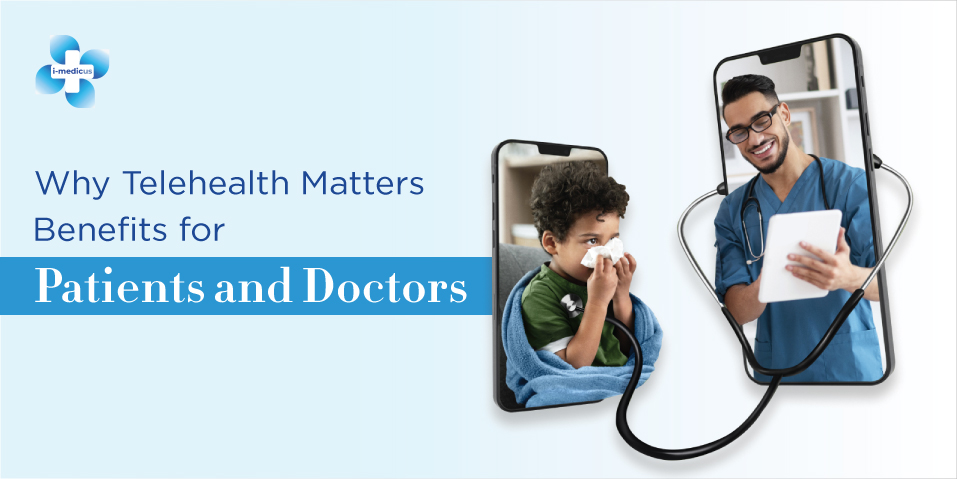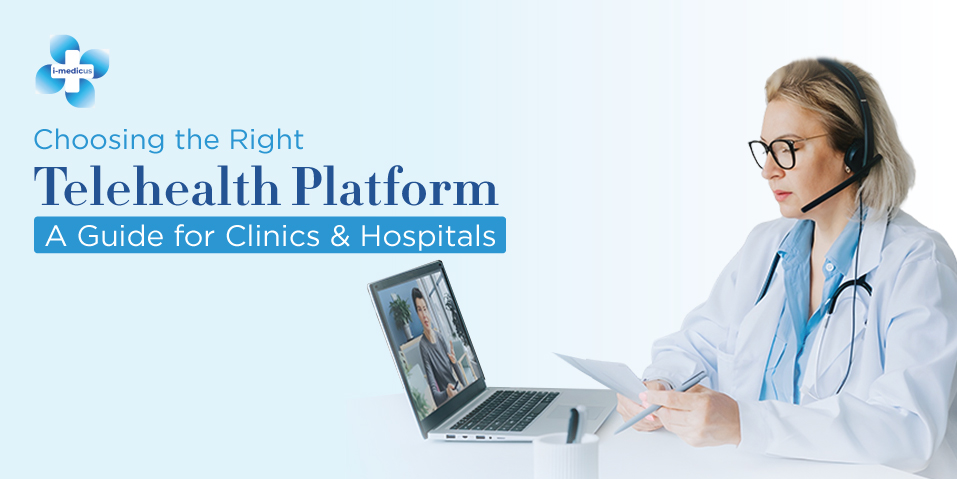Before we jump into telehealth benefits, do these names sound familiar to you?
Robert Jarvik, René Laennec, Edward Jenner: No?
Okay, let’s try another list: Steve Jobs, Bill Gates, Elon Musk.
This time, we’re certain these names strike a chord. This contrast more or less explains the irony of innovations in healthcare!
As someone has rightly put it- “We don’t appreciate how important healthcare innovation is for all of us unless we are faced with a pandemic”
Speaking of pandemics, we are all aware of the devastating impact COVID-19 has had on our lives and the global economy at large.
Yet, amidst the challenges, a glimmer of hope emerged: the rise of Telehealth Services. This technological advancement allowed healthcare to transcend physical boundaries and become more accessible than ever before.
What is Telehealth?
Telehealth, or virtual care, allows patients to connect with their doctor via phone, video, or mobile app instead of going into the office. While telehealth isn’t for every situation, it’s becoming an integral part of the healthcare system and the preferred method of care for many.
Why does Telehealth Matter?
Telehealth benefits matter because healthcare is still a luxury for millions of people around the globe. Here are some statistics to give you a better idea about the state of global healthcare:
Maternal Mortality: Every day, approximately 800 women die from preventable causes related to pregnancy and childbirth.
Child Mortality: In 2020, an estimated 5.2 million children under the age of five died, primarily from preventable or treatable causes.
Infectious Diseases: Despite medical advances, infectious diseases like tuberculosis (TB) and malaria continue to pose a significant threat. In 2021, there were an estimated 2.2 million new TB cases and 600,000+ malaria-related deaths.
Worker Shortages: The World Health Organization (WHO) estimates a global shortage of 10 million healthcare workers by 2030.
Spending Disparities: The United States spends over 16% of its GDP on healthcare, while many low-income countries struggle to allocate even a fraction of that amount.
Infrastructure Inequities: There are substantial disparities in healthcare infrastructure between urban and rural areas, with rural populations often having limited access to quality healthcare facilities.
These statistics press the need for a more accessible and affordable healthcare system.
How can Telehealth Services help?
Telehealth solutions remove major barriers that make medical care difficult to access and afford. With a telehealth app on their mobile devices, individuals can connect with top specialists even if they are located miles away. Remote telehealth visits are ideal for routine follow-ups, medication management, counseling, and treating minor conditions.
Telehealth for Patients: Benefits
Telehealth visits offer patients a convenient and flexible way to connect with their doctor. No more taking time off work or school, dealing with traffic and parking, or sitting in a waiting room. Patients can have an appointment right from the comfort of their home.
Convenience
Telehealth appointments can often be scheduled sooner, even the same, or the next day. This allows patients to get the care they need right away versus waiting days or weeks for an in-person visit.
Flexibility
Doctors usually offer longer windows for telehealth visits and can often accommodate evening or weekend appointments when needed.
- If patients have a busy schedule or childcare issues, telehealth may be easier to fit in versus taking time off work or school for in-person visits.
- Telehealth is also a good option if patients are traveling and need to consult their regular doctor.
Lower costs
With telehealth, patients avoid expenses like transportation, parking, and time off work. Telehealth visits are often cheaper than in-person visits. Patients also have more options to choose from and can compare costs between providers to find affordable care.
Continuity of Care
For ongoing conditions like diabetes, heart disease, or behavioral health issues, telehealth enables patients to check in regularly with their doctor and stay up to date with their treatment plans. This continuity of care has been shown to lead to better health outcomes and patient satisfaction.
Feeling Heard
Doctors have reported that some patients open up more readily during a telehealth visit. Sitting in the familiar and comfortable surroundings of home can make patients feel more at ease to discuss sensitive topics or ask questions they may hesitate to bring up in person
Telehealth for Providers: Benefits
For healthcare providers, telehealth services offer increased efficiency in many ways.
Reduced No-Shows
With telehealth visits, the rate of patients not showing up for their appointments drops significantly. Patients don’t have to deal with traffic, parking, or public transit to attend a virtual visit. This allows doctors and staff to make better use of their time by not having empty appointment slots.
Time Savings
Telehealth visits are often shorter in duration than in-person visits. Doctors and patients alike save time by not having to travel to and from the appointment. Virtual waiting rooms also minimize the time patients spend sitting in the actual waiting room. These time savings allow doctors to see more patients in a day.
Expanded Access
With telehealth, healthcare providers can see patients from anywhere there is an internet connection. This allows them to reach patients in remote, rural areas who may not have access to specialized care locally. Doctors can even see patients when the office is closed or they are out of the office themselves.
Continuity of Care
With the convenience of telehealth services, healthcare providers can follow up with patients more frequently. Quick virtual check-ins can help monitor ongoing conditions or the impact of medication or treatment changes.
Lower Overheads
For physicians and healthcare organizations, telehealth lowers operational costs. Doctors don’t need as much office space or staffing to see patients virtually. They can treat more patients in less time without the hassles of an in-person practice.
Meeting Patient Needs
Healthcare providers want patients to have the best experience and outcomes possible. By offering telehealth services, doctors can break down barriers and ensure patients get the support they need. Doctors themselves report higher job satisfaction knowing they can meet their patient’s needs through telehealth.
Try the i-medicus telehealth app today!
Experience the future of healthcare with the i-medicus telehealth services for patients, providers, and clinics. Enjoy secure video consultations, and ensure privacy through HIPAA compliance. Download and try the i-medicus telehealth app today.








